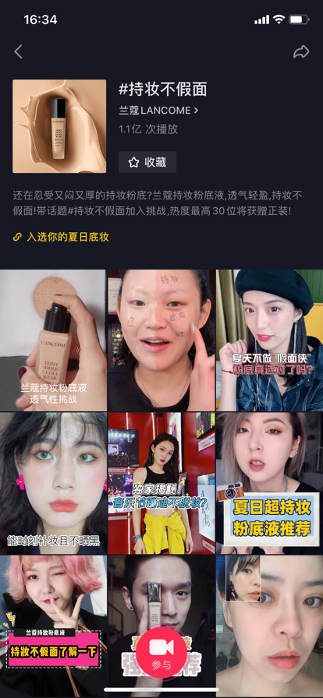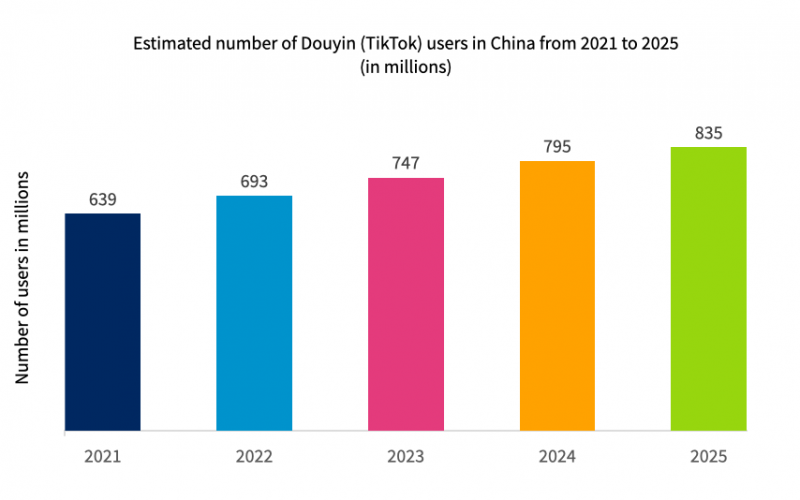
The Background of Internet Short Video
In the age of the digital economy, propelled by advancements in mobile Internet, artificial intelligence, and big data, Internet short videos have emerged as the dominant form of content consumption, supplanting traditional media. The digital landscape is teeming with opportunities for value creation, and business models have become the compass guiding enterprises through this dynamic environment.
Value proposition, creation, and capture form the fundamental pillars of these models, with each step being integral to the success of any digital venture. Surprisingly, scant academic attention has been directed towards exploring the intricate web of value within the Internet short video realm, specifically within the framework of “value proposition → value creation → value capture” (Teece, 2010; Priem et al., 2018).
This report embarks on a journey to decipher the enigma of value creation within the Internet short video business model, with a special focus on the stages of “value proposition → value creation → value capture.” We will use Douyin (TikTok, whose mainland Chinese counterpart is Douyin), the Chinese sensation, as a captivating case study to unravel the theoretical framework underpinning this phenomenon.
Read More: How Video Consumption is Changing in 2023
What is the Internet short video business model?
The Internet short video business model is a dynamic and evolving platform-based model that leverages short video content as a conduit to connect content creators and consumers through the application of Internet technologies. This model catalyzes a cascade of interactive behaviors, as exemplified by platforms like Douyin. The content creation methods within this ecosystem encompass both user-generated content (UGC) and professionally generated content (PGC), with a unique twist known as professionally generated user content (PUGC) (Rong et al., 2019).

User-generated Content (UGC) in Douyin
One paramount element underlying the success of the Internet short video business model is the concept of network effects. Network effects posit that the utility derived from information goods and services increases as more users or network participants join the ecosystem (McIntyre & Srinivasan, 2017). In the context of short video platforms, these effects manifest as same-side and cross-side network effects. Same-side network effects influence the experience of users on one side of the platform as the user base grows, while cross-side network effects affect the interaction between different user groups within the platform (Hinz et al., 2020).
This critical understanding of network effects serves as the linchpin for building a robust “value net+” within the platform business model, facilitating value co-creation among stakeholders through resource attributes, connection attributes, and network attributes. The resulting “connection dividends” further fortify the platform’s position within the digital landscape.
While existing research has primarily scrutinized specific industries and contexts, such as shared accommodations and online gaming platforms, the overarching framework of network effects and value creation remains a powerful tool for comprehending the intricate dynamics of the Internet short video business model. In the following journey, we will explore how these network effects shape the value proposition, creation, and capture within the realm of Internet short videos, with Douyin as our guiding star.
Read more : Why can’t Twitter and TikTok be easily replaced? Something called ‘network effects’
Douyin: A Case Study in the “Content is King” Model
The “content is king” business model is a robust framework that revolves around the principle of delivering media-centric content as its primary value proposition. This model gains its strength by attracting and engaging a large audience through centralized operations while capturing value through transactions and liquidations, often obscured by cross-boundary network effects. At its core, this model thrives on the synergy between content creators and consumers, where the quality of content and the professionalism of creators play pivotal roles in meeting users’ entertainment, admiration, and relaxation needs(Hinz et al., 2020).
In this model, the platform wields absolute control and distribution rights over user attention and traffic resources, and the activities of content consumers serve as a catalyst for the creativity of content producers. This positive feedback loop across the network results in traffic realization income for the platform and transaction promotion, which is often referred to as “Schumpeter rent” (Lieberman et al., 2018).
Value Proposition – The Content-Centric Approach
Douyin serves as a prominent example of the “content is king” business model. It has excelled in delivering its value proposition by positioning itself as the starting point for entertainment. The platform utilizes a star-making system that promotes key opinion leaders (KOLs) and provides media-oriented content, often centered around trending topics and celebrity influences. Douyin’s content creator landscape is diverse, with a mix of stars (33%) and internet celebrities (24%) dominating the production of professionally generated content (PGC) (Lu & Pan, 2022).
Douyin’s user interface is tailored to be a content consumption platform, with the majority of users primarily seeking entertainment rather than content creation. The platform employs various strategies to combat content homogeneity and encourage active content creation. Frequent introduction of new challenges, special effects, filters, props, and stickers keeps users engaged and encourages them to create high-quality, original content.
Value Creation – Traffic and Operations

Monthly Active Users in Douyin
Douyin’s meteoric rise can be attributed to its initial focus on attracting high-quality content creators, such as celebrities and influencers, coupled with strong centralized operations. In 2023, Douyin has more than 700 million monthly active users, making it the fastest app to reach this milestone (The WeChat Agency, 2022). Douyin’s strategy emphasizes content quality due to its weak social relationship chain, resulting in a centralized distribution model where popular content is prominently featured.
Douyin’s recommendation algorithm employs a “Matthew effect,” directing traffic primarily to top content creators. This approach concentrates attention on the platform’s head creators, with only 3% of head videos accounting for 80% of user playback. This strategy drives a gathering of fans around the platform’s most influential creators.
While Douyin enjoys immense popularity and user engagement, its user stickiness falls short of some competitors, highlighting its unique approach focused on centralized content creation (Kaye et al., 2021).
Value Capture – Monetizing Traffic
Douyin’s value capture mechanism revolves around its dominance of public domain traffic and centralized operations. The platform exercises complete control over the distribution of traffic resources. It derives revenue mainly from advertising, which accounts for approximately 80% of its total earnings (Wei & Chenxi, 2020).

Shopping Cart in Douyin
Information stream advertising integrates seamlessly into Douyin’s content feed, with tailored ads appearing alongside video content. The platform also explores e-commerce diversions, featuring shopping cart buttons in short videos that enable users to purchase products directly.
Through these revenue streams, Douyin successfully captures value while maintaining its status as a content-centric platform.
Read More: Douyin: More than the Chinese version of TikTok
Criticism
Critics may raise valid concerns about privacy and data security when discussing the “content is king” model, particularly on platforms like Douyin. These detractors argue that the centralized nature of operations and the extensive control these platforms wield over user data create a potential risk to user privacy (Zeng & Kaye, 2022). Given Douyin’s global reach (Named Tiktok outside China) and its ability to amass vast amounts of user data, concerns over data misuse and breaches are valid, and these concerns can undermine the trust users place in the platform.
While concerns about privacy and data security are legitimate, Douyin has taken significant steps to address these issues and maintain user trust. The platform has implemented measures to enhance user data protection and transparency. These efforts include robust data access restrictions, stringent content filtering mechanisms, and regular privacy audits to ensure compliance with data protection regulations. Douyin also provides users with granular privacy settings, allowing them to control who can see their content and engage with them.
Furthermore, Douyin’s commitment to data privacy is reflected in its willingness to cooperate with regulatory authorities and its efforts to build trust through transparency reports and data transparency centers. While the risks associated with centralized data control are real, Douyin’s proactive approach to data protection demonstrates its dedication to safeguarding user information and mitigating potential privacy risks. As the platform continues to evolve, it must prioritize user data privacy and cybersecurity to maintain its credibility and user confidence.
Read More: Zuckerberg misunderstands the huge threat of TikTok
License:
Unveiling the Magic of Douyin: Achieving Value Creation in the Internet Short Video Business Model by Yudong Zhang is marked with CC0 1.0 Universal
References
Allyn, B. (2023, April 12). Why can’t Twitter and TikTok be easily replaced? Something called “network effects.” NPR. https://www.npr.org/2023/04/12/1168232177/twitter-tik-tok-replaced-network
Bump, P. (2020, July 28). How Video Consumption is Changing in 2020 [New Research]. Blog.hubspot.com. https://blog.hubspot.com/marketing/how-video-consumption-is-changing
Chew, S. (2023, April 21). TikTok’s CEO on its future — and what makes its algorithm different. Www.ted.com. https://www.ted.com/talks/shou_chew_tiktok_s_ceo_on_its_future_and_what_makes_its_algorithm_different
Constine, J. (2020, April 1). “Content network effect” makes TikTok tough to copy. TechCrunch. https://techcrunch.com/2020/04/01/content-network-effect/
David. (2020, October 16). How to Setup a Douyin Store and Sell your Products. Sekkei Digital Group. https://sekkeidigitalgroup.com/douyin-ecommerce-store-setup/
Hasnain , A. (2023, June 29). TikTok’s Updated Data Usage Regulations Align with Evolving Regional Laws Enhancing User Privacy. Digital Information World. https://www.digitalinformationworld.com/2023/06/tiktoks-updated-data-usage-regulations.html
Hinz, O., Otter, T., & Skiera, B. (2020). Estimating Network Effects in Two-Sided Markets. Journal of Management Information Systems, 37(1), 12–38. https://doi.org/10.1080/07421222.2019.1705509
Kaye, D. B. V., Chen, X., & Zeng, J. (2020). The co-evolution of two Chinese mobile short video apps: Parallel platformization of Douyin and TikTok. Mobile Media & Communication, 9(2), 229–253. https://doi.org/10.1177/2050157920952120
Keen Tham, W. (2019, August 16). Before you start creating video content, make sure you know these 3 terms! Www.linkedin.com. https://www.linkedin.com/pulse/before-you-start-creating-video-content-make-sure-know-why-keen-tham
Lieberman, M. B., Balasubramanian, N., & Garcia‐Castro, R. (2017). Toward a dynamic notion of value creation and appropriation in firms: T he concept and measurement of economic gain. Strategic Management Journal, 39(6), 1546–1572. https://doi.org/10.1002/smj.2708
Lu, Y., & Pan, J. (2022). The Pervasive Presence of Chinese Government Content on Douyin Trending Videos. Computational Communication Research, 4(1). https://doi.org/10.5117/ccr2022.2.002.lu
McIntyre, D. P., & Srinivasan, A. (2016). Networks, platforms, and strategy: Emerging views and next steps. Strategic Management Journal, 38(1), 141–160. https://doi.org/10.1002/smj.2596
Priem, R. L., Wenzel, M., & Koch, J. (2018). Demand-side strategy and business models: Putting value creation for consumers center stage. Long Range Planning, 51(1), 22–31. https://doi.org/10.1016/j.lrp.2017.07.007
Rhodes, M. (2010, February 13). The Matthew Effect – linking and how things become viral in social media. Social Media Today. https://www.socialmediatoday.com/content/matthew-effect-linking-and-how-things-become-viral-social-media
Rong, K., Xiao, F., Zhang, X., & Wang, J. (2019). Platform strategies and user stickiness in the online video industry. Technological Forecasting and Social Change, 143, 249–259. https://doi.org/10.1016/j.techfore.2019.01.023
Singh, A. (2023, August 7). The Rise of Short-Form Video Content: Reshaping Digital Media Consumption. Www.linkedin.com. https://www.linkedin.com/pulse/rise-short-form-video-content-reshaping-digital-media-aastha-singh
Tai, Q. (2021). TikTok, Instagram, Snapchat — and the rise of bite-sized content. In TED. https://www.ted.com/talks/qiuqing_tai_tiktok_instagram_snapchat_and_the_rise_of_bite_sized_content
Teece, D. J. (2010). Business Models, Business Strategy and Innovation. Long Range Planning, 43(2-3), 172–194. https://doi.org/10.1016/j.lrp.2009.07.003
The WeChat Agency. (2022, July 14). Douyin (China’s TikTok) Statistics 2022 [UPDATED!]. The WeChat Agency. https://www.thewechatagency.com/douyin-stats-2022/
Wei, B., & Chenxi, L. (2020, September 1). Study on the Win-Win Strategy of Douyin and Its Users. IEEE Xplore. https://doi.org/10.1109/ICISCAE51034.2020.9236835
Zeng, J., & Kaye, D. Bondy V. (2022). From content moderation to visibility moderation: A case study of platform governance on TikTok. Policy & Internet, 14(1). https://doi.org/10.1002/poi3.287
